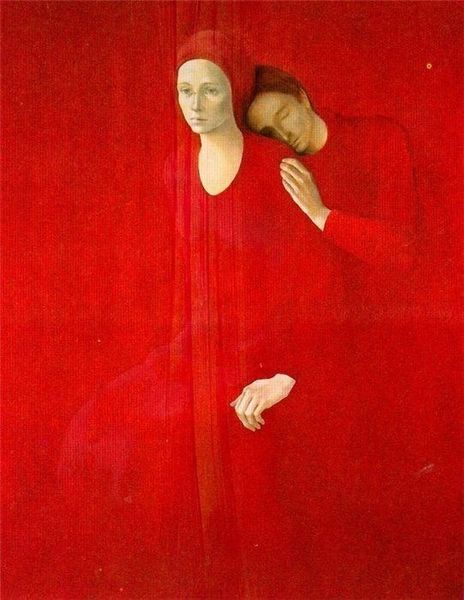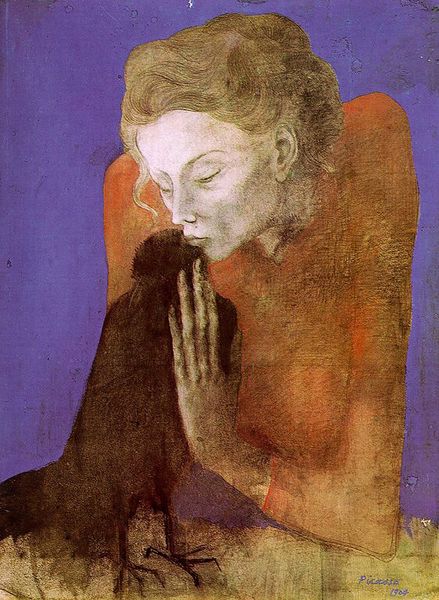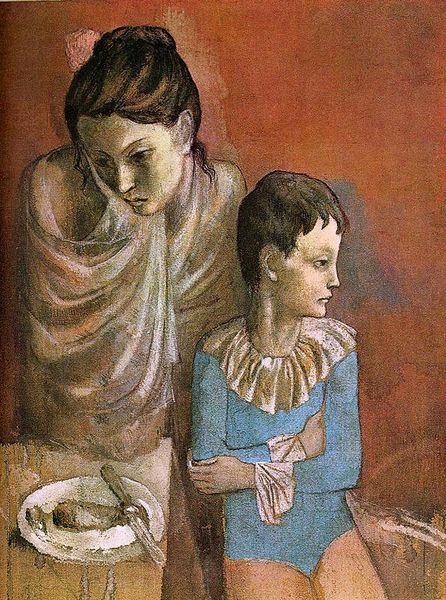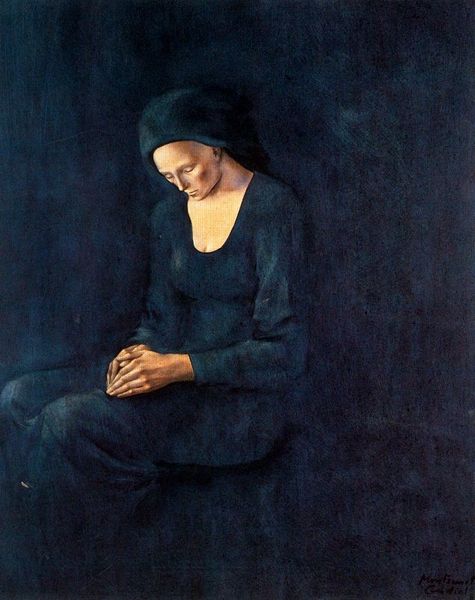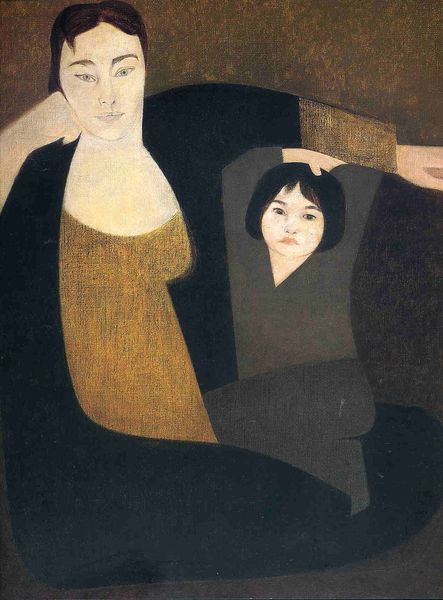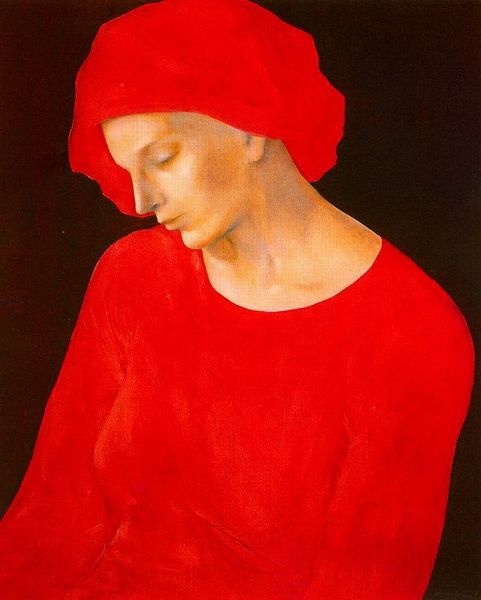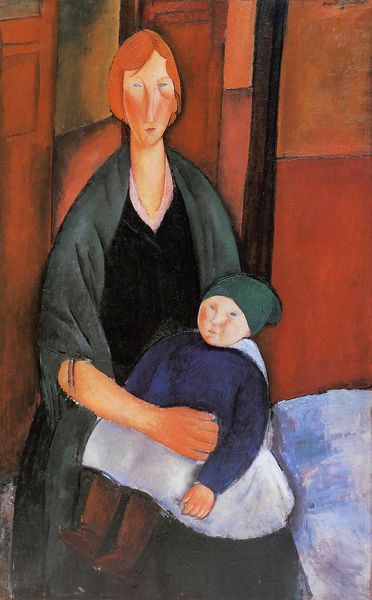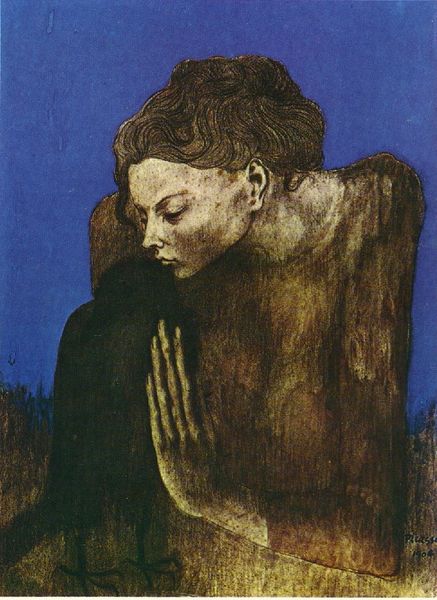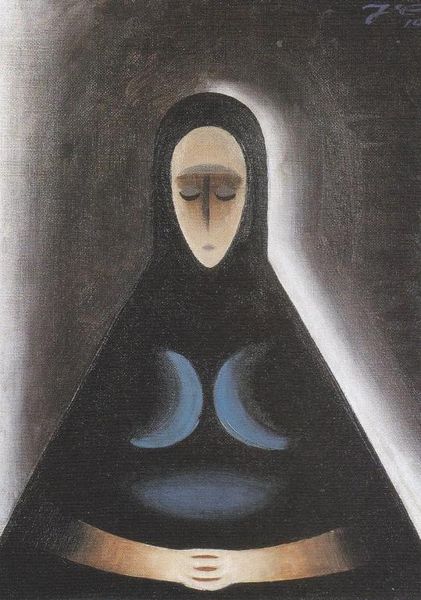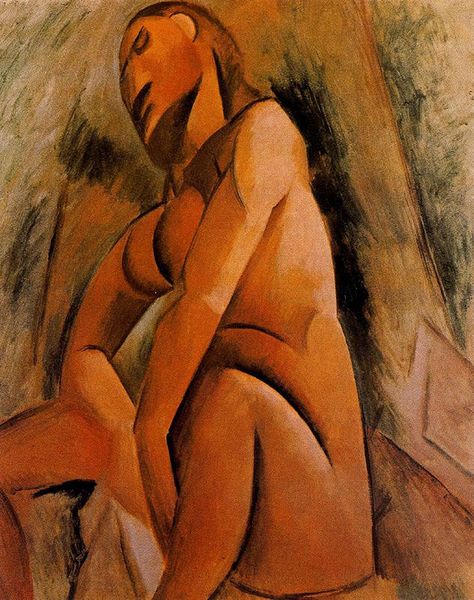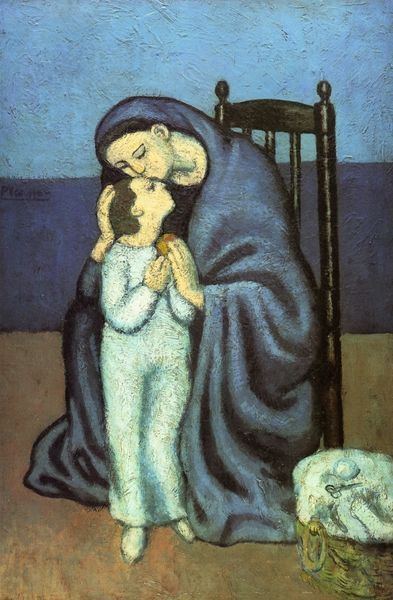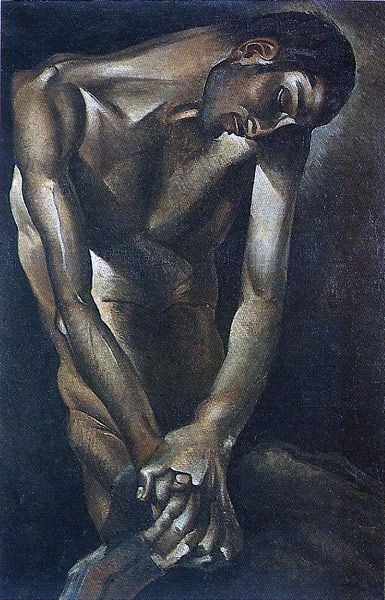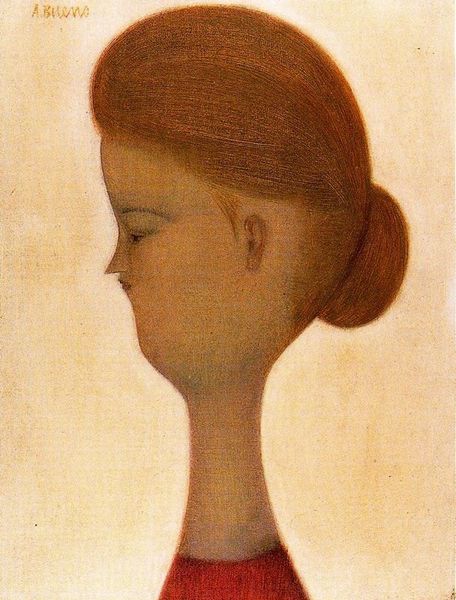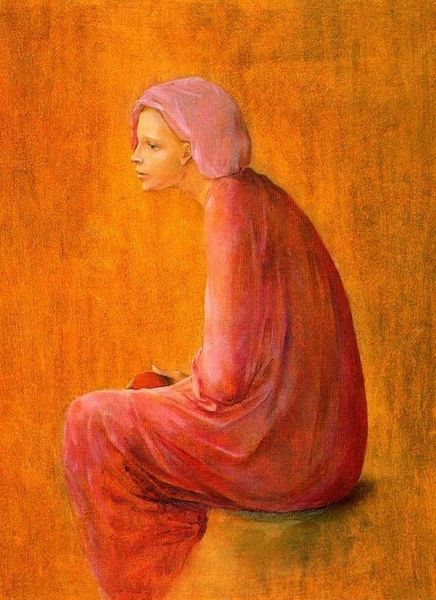
painting, acrylic-paint
#
portrait
#
painting
#
acrylic-paint
#
figuration
#
acrylic on canvas
#
portrait drawing
#
portrait art
#
modernism
Copyright: Montserrat Gudiol,Fair Use
Curator: This work, simply titled "Untitled," is an acrylic painting. Montserrat Gudiol created this portrait-style painting, but the year of completion remains unknown to us. What strikes you first about this artwork? Editor: The overwhelming blue tone and the rough texture created with acrylic, it feels somber, almost as if witnessing a memory fading away. The clothing looks coarse. It makes me consider where the materials come from and the implied labor of production of it all. Curator: It's interesting you mention labor; Gudiol often presented female figures that subverted typical societal expectations and conventions during a pivotal time for women. How does that intersect, perhaps, with our modern understanding of labor issues? Editor: That’s key, and the almost anonymous nature of their faces amplifies that focus. The uniformity of their clothes speaks to some standardization in their experience. I wonder how Gudiol’s painting practices – perhaps sketching, the choice of pigments – affected the social message about these portraits. Curator: A fascinating point. The figures appear trapped in this indefinite dark space. Acrylic paint was relatively new when she was creating the artwork, so one can think of how its access and relatively lower production cost democratized artwork creation during the second half of the twentieth century. Editor: True. Considering Gudiol's use of acrylic also hints at a breakaway from more conventional techniques favored within the fine art market, and maybe implies the intended democratization of art creation, in itself a form of political act during the authoritarian regime in Spain. I am just thinking how this image, exhibited now, questions our expectations and notions of motherhood. Curator: That's perceptive; these faceless characters challenge conventional artistic interpretations of maternity and childhood as idyllic, and rather emphasize the role women have taken up along history, from production to education and upbringing. Editor: So, from this focus on method, texture, and a critical historic interpretation, it challenges the market and audience expectations by revealing uncomfortable truths. Thank you. Curator: It was my pleasure. These new ways of reading our collections offer visitors invaluable information that might challenge certain aesthetic impositions when viewing art and open doors for novel dialogues.
Comments
No comments
Be the first to comment and join the conversation on the ultimate creative platform.
